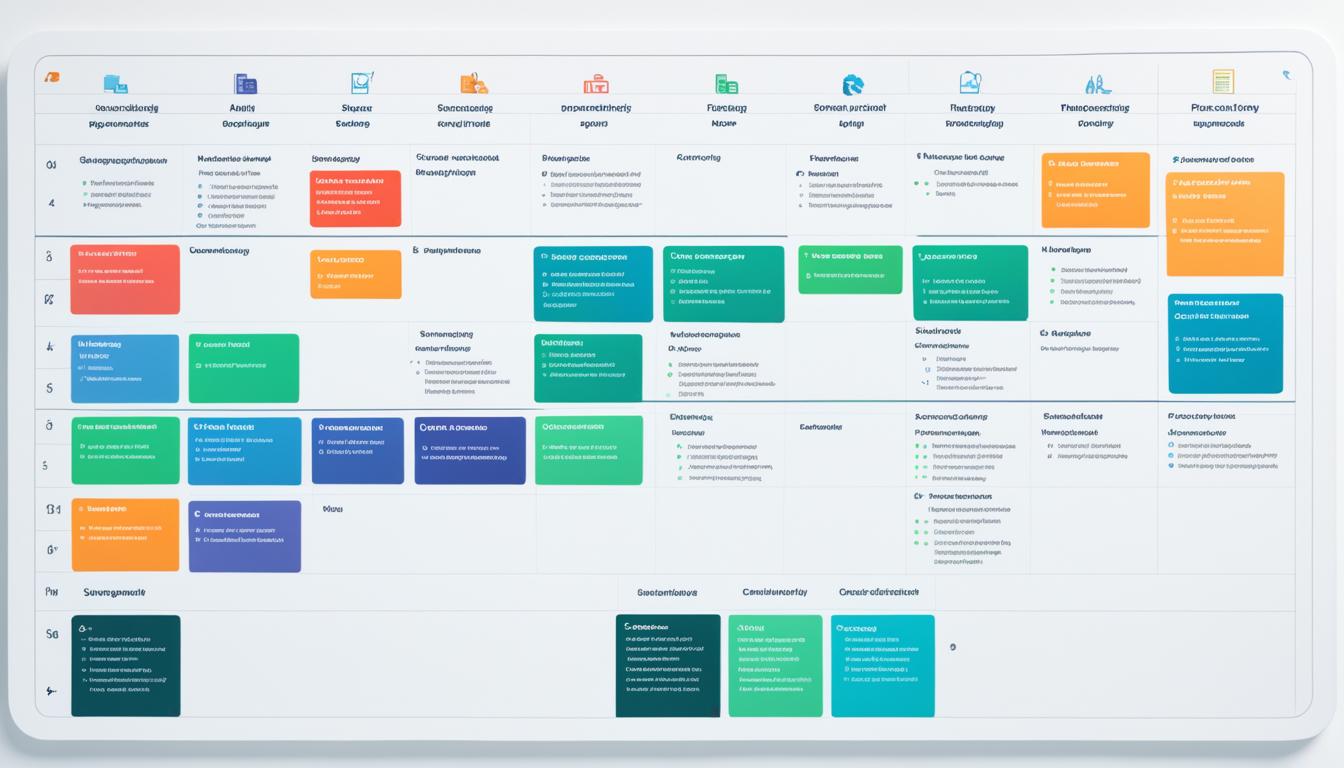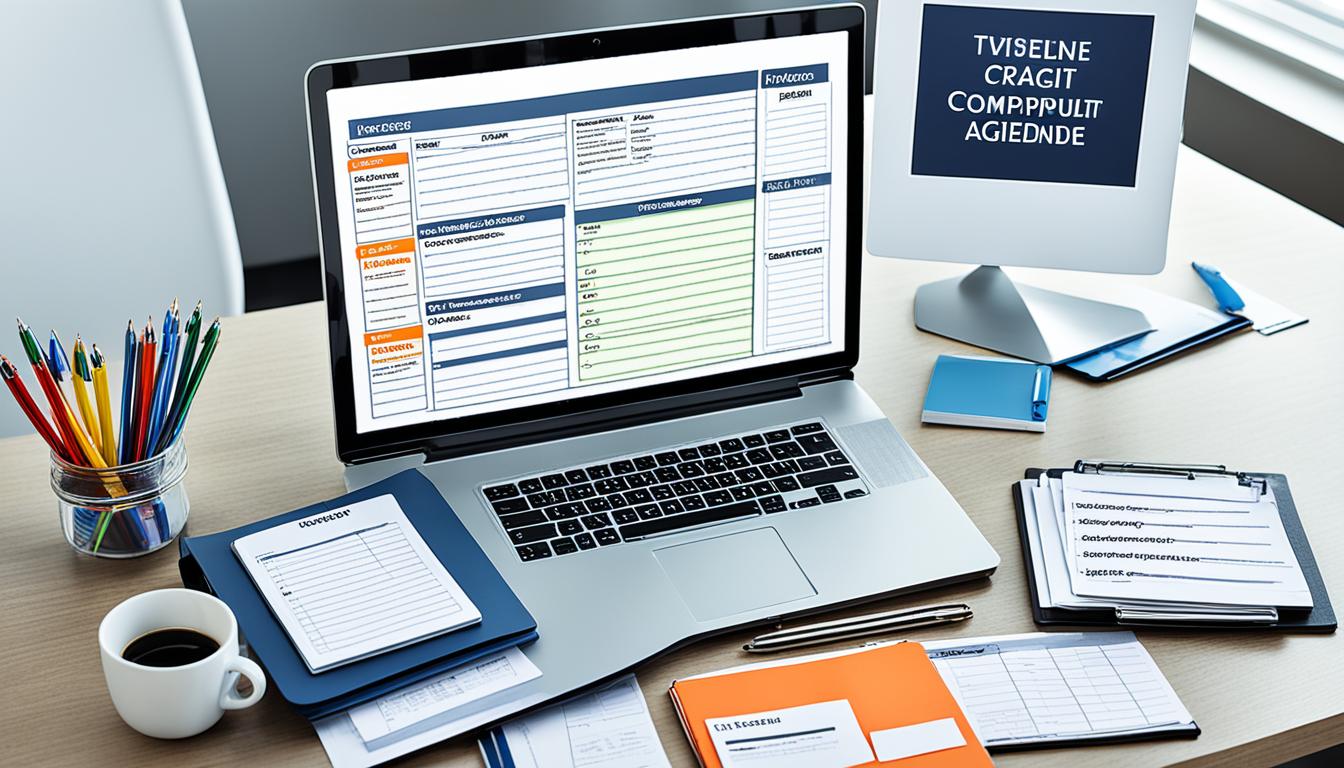
“The Cost of Conversation: How to Minimize Meeting Expenses””

“Time is money. The more time you spend talking about what you’re going to do, the less time you have to spend on what you’re going to do.”
— Hakeem Olajuwon
Meetings that aren’t optimised can cost your business a pretty penny. When your company is smarter about the meetings employees are having, and when these meetings are as succinct and efficient as possible, these unnecessary expenses are reduced. Cost reduction is vital in all business areas, but when it comes to meetings, it’s always in the company’s best interest to have its team members use their time wisely.
Whether it’s a boardroom brainstorm or a virtual conference, finding ways to reduce meeting expenses can lead to significant cost savings and increased productivity. By implementing cost-effective communication strategies and adopting efficient meeting budgeting practices, businesses can cut down on conversation expenses and minimise conference costs.
Key Takeaways:
- Reducing meeting expenses can lead to cost savings and increased productivity.
- Cost-effective communication strategies and efficient meeting budgeting are essential for minimizing conversation expenses.
- Optimising meetings by being succinct, efficient, and time-conscious can help reduce unnecessary expenses.
- Implementing strategies like inviting the right people, meeting online, and setting clear goals can contribute to cost-conscious meeting solutions.
- By prioritising efficient meeting practices, businesses can make the most of their time, resources, and budget.
The Importance and Benefits of Meeting Cost Reduction
Reducing meeting costs is crucial for businesses as it saves money and improves overall efficiency. By implementing cost-effective communication strategies and minimizing unnecessary expenses, companies can make the most of their resources.
One of the key benefits of reducing meeting expenses is the increased productivity it brings. When employees spend less time in meetings, they have more time to focus on their work, resulting in higher output and better performance.
Moreover, by optimizing meetings and making them more efficient, businesses enable their team members to contribute more effectively. When meetings are streamlined and well-structured, employees are more engaged and actively participate in the discussions. This leads to better decision-making and increased innovation as different perspectives are shared and valuable insights are gained.
Meeting cost reduction also contributes to saving time and money. Unnecessary and lengthy meetings can eat up valuable resources, both in terms of employee time and financial expenses. By trimming down meeting durations and implementing time-conscious strategies, companies can allocate these resources more effectively to other areas of the business.
Ultimately, reducing meeting costs is a win-win situation for businesses. It not only helps in optimizing resources but also leads to increased productivity, improved decision-making, and a more efficient and focused work environment.
Meeting Cost Reduction Strategies
When it comes to reducing meeting costs while maintaining productivity, implementing the right strategies is essential. By following these effective meeting cost reduction strategies, you can optimize your meetings and achieve better results:
1. Invite the Right People
Ensure that you invite individuals who are relevant to the topics being discussed. By inviting the right people, you can streamline the decision-making process, avoid unnecessary attendees, and save time and resources.
2. Meet Online
Consider conducting meetings virtually instead of in person to save on travel costs and time. With the availability of various online meeting platforms, you can collaborate with team members from different locations efficiently.
3. Collaborate on Meeting Agendas
Encourage all meeting participants to contribute to the meeting agenda. By involving everyone in the agenda creation process, you can ensure that the meeting focuses on the most important topics and avoid sidetracking discussions.
4. Be Prepared and Punctual
Prioritize preparation and punctuality for all attendees. Share relevant documents and information before the meeting to give participants ample time to familiarize themselves with the material. Being prepared and punctual helps avoid unnecessary delays and tangents during the meeting.
5. Facilitate Contribution from All Attendees
Create a collaborative environment that encourages participation from all meeting attendees. Foster open communication and ensure that everyone has a chance to share their ideas, opinions, and insights. This inclusive approach helps maximize the value derived from each meeting.
6. Stay on Task and Set Clear Goals
Establish clear goals and objectives for each meeting. Keep the discussions focused and avoid going off-topic. By staying on task and setting clear goals, you can make the most of the allocated meeting time and achieve desired outcomes.
7. Use Meeting Tools and Technology
Take advantage of meeting tools and technology to enhance collaboration and productivity. Utilize features such as shared documents, virtual whiteboards, and screen sharing to facilitate effective communication and streamline workflows.
8. Assign Action Items
Assign actionable tasks and responsibilities to meeting participants. Clearly define the next steps and ensure that everyone understands their role. Assigning action items holds individuals accountable and helps drive progress after the meeting.
9. Send a Meeting Follow-Up Email
After the meeting, send a follow-up email summarizing the key decisions, action items, and deadlines. This ensures that all participants are aligned and have a clear understanding of their responsibilities moving forward.
Implementing these meeting cost reduction strategies encourages productive meetings while minimizing unnecessary expenditures. By optimizing your meeting processes, you can enhance collaboration, reduce costs, and drive better business outcomes.
The Role of Meeting Cost Calculator Tools
In today’s business landscape, optimizing resources and cutting unnecessary costs are top priorities for organizations. One area where cost reduction can be achieved is meetings. Understanding the financial implications of meetings can help businesses make conscious decisions, improve productivity, and remove unnecessary meetings. Meeting cost calculator tools, like Fellow, provide valuable insights into the expenses associated with meetings, enabling organizations to create a conscious meeting culture.
Meeting cost calculator tools allow businesses to calculate the cost of their meetings based on the number of attendees and their value of time. By inputting these key parameters, organizations can gain a clear understanding of the financial impact of meetings on their operations. This knowledge empowers businesses to allocate their time and resources more effectively, ultimately improving meeting productivity and overall efficiency.
One such tool is Fellow, an innovative meeting management platform that offers a built-in meeting cost calculator. With Fellow, businesses can effortlessly calculate the cost of individual meetings or even analyze the costs of meetings across an entire organization. This provides valuable data that can be used to identify areas of improvement and implement strategies to reduce costs.
The benefits of using meeting cost calculator tools are twofold. Firstly, they enable organizations to make conscious decisions about meeting creation. Armed with the knowledge of the financial impact, businesses can evaluate the necessity of each meeting and determine whether it is truly worth the expense. This helps in eliminating unnecessary meetings, reducing costs, and focusing on more productive work.
Secondly, meeting cost calculator tools facilitate collaborative meeting creation. They provide a centralized platform for creating agendas, recording decisions, and assigning action items. This streamlines the meeting process and improves productivity by ensuring that meetings stay on track and achieve their objectives. By optimizing the meeting structure, businesses can maximize their return on investment and make the most of their valuable time.
Here is an example of how a meeting cost calculator tool can provide valuable insights:
Meeting Cost Calculation Example
| Number of Attendees | Value of Time per Hour (in GBP) | Meeting Duration (in Hours) | Total Cost of Meeting (in GBP) |
|---|---|---|---|
| 10 | 50 | 2 | 1,000 |
| 5 | 40 | 1.5 | 300 |
| 8 | 60 | 3 | 1,440 |
In the above example, organizations can clearly see how the number of attendees, the value of their time, and the meeting duration directly impact the total cost of each meeting. This knowledge can guide businesses in making informed decisions about meeting frequency, agenda optimization, and participant selection.
By leveraging meeting cost calculator tools, businesses can make conscious decisions about meeting creation, remove unnecessary meetings, and allocate time for more productive work. These tools, such as Fellow, provide a collaborative platform for creating agendas, recording decisions, and assigning action items, thus improving meeting productivity. Embracing these tools enables organizations to optimize their resources, reduce costs, and drive better business outcomes.
Effective Meeting Preparation and Participation
Effective meeting preparation and participation are essential steps in reducing meeting expenses and maximizing productivity. By following these strategies, you can ensure that your meetings are efficient and focused on achieving clear objectives.
Review the Agenda
Before the meeting, take the time to review the agenda thoroughly. Familiarize yourself with the topics to be discussed and any supporting materials. This will allow you to come prepared with your thoughts and ideas, promoting more productive discussions.
Come Prepared
Arrive at the meeting with any necessary documents, data, or reports. By having relevant information readily available, you can actively contribute to collaborative discussions and provide valuable insights to drive decision-making.
Active Participation
During the meeting, actively engage and participate in the discussion. Listen attentively to others and share your perspectives, ideas, and suggestions. Collaborative discussions foster creativity, innovation, and effective problem-solving.
Minimize Distractions
To stay focused and minimize distractions, close email inboxes and mute notifications on your devices. This ensures that your attention remains on the meeting and that you can actively contribute without interruptions.
Set Clear Objectives
Prioritize setting clear objectives for the meeting. Clearly define the purpose, outcomes, and any specific decisions or actions to be taken. This ensures that everyone understands the meeting’s goals and helps maintain a focused and productive conversation.
| Effective Meeting Preparation and Participation Tips: |
|---|
| Review the agenda before the meeting |
| Come prepared with thoughts and ideas |
| Actively participate in collaborative discussions |
| Minimize distractions by closing inboxes and muting notifications |
| Set clear objectives for the meeting |
Leveraging Technology for Efficient Meetings
Utilizing technology is a game-changer when it comes to improving meeting efficiency. Virtual meetings and meeting management tools provide innovative solutions that streamline collaboration, enhance communication efficiency, and effectively manage action items.

Virtual Meetings: Saving Time and Money
Virtual meetings have revolutionized the way businesses conduct their meetings. By leveraging video conferencing platforms such as Zoom or Microsoft Teams, teams can connect from different locations, eliminating the need for expensive travel arrangements. Not only does this save valuable time, but it also reduces travel costs, making virtual meetings an ideal option for businesses seeking to minimize expenses.
Meeting Management Tools: Simplifying Collaboration
Meeting management tools like Fellow or MeetingKing empower organizations to streamline their meeting processes and enhance collaboration. These tools provide features such as collaborative agendas, meeting minutes, and action item assignments, all in a centralized platform. With these tools, team members can work together in real-time, ensuring that everyone is on the same page and facilitating efficient decision-making.
“Virtual meetings and meeting management tools are powerful allies in increasing meeting efficiency and minimizing costs.”
Improving Communication Efficiency
Inefficient and scattered communication can decrease meeting productivity. However, with meeting management tools, you can streamline communication channels and ensure that relevant information is easily accessible to all participants. Collaborative agendas allow team members to prepare in advance, minimizing confusion, while meeting minutes provide a reference point for discussions and decisions. By centralizing the communication process, these tools enhance efficiency and keep meetings focused and productive.
Managing Action Items with Ease
One of the keys to effective meeting management is ensuring that action items are assigned, tracked, and completed. Meeting management tools simplify this process by providing a dedicated space for assigning action items and tracking their progress. With clear ownership and accountability, teams can follow through on tasks efficiently, ensuring that decisions made during meetings are implemented promptly.
By leveraging technology, businesses can take advantage of virtual meetings and meeting management tools. This combination optimizes meeting efficiency, improves collaboration, enhances communication, and ensures effective action item management. By implementing these tools, businesses can reduce costs while maximizing the impact of their meetings.
The Role of Decision Making in Meeting Cost Reduction
Effective decision-making is crucial in meeting cost reduction. When decisions are made during meetings, it significantly reduces the time spent in discussions and clarifies actions and responsibilities. By establishing clear goals and facilitating the decision-making process, meetings become more efficient, reducing both time and costs.
Encouraging active participation from all attendees plays a vital role in effective decision-making. When team members actively contribute their perspectives and insights, it leads to better-informed decisions and a more streamlined decision-making process. Leveraging technology, such as collaborative platforms and communication tools, can further enhance decision-making by facilitating real-time collaboration and ensuring that all voices are heard.
Additionally, setting clear expectations for decision-making within meetings helps to streamline the process and minimize unnecessary discussions. By defining the decision criteria, desired outcomes, and timeline upfront, attendees can focus on making decisions rather than getting caught in lengthy debates. This not only saves time but also reduces meeting costs by enabling more targeted and productive discussions.
“The ability to make decisions is a fundamental skill in effective leadership. By making sound and efficient decisions during meetings, leaders can effectively allocate resources, clarify responsibilities, and drive the progress of projects and initiatives.”
Moreover, effective decision-making during meetings helps to clarify actions and responsibilities. When decisions are made, it provides a clear roadmap for the next steps, ensuring that everyone understands their roles and tasks. This clarity eliminates confusion and prevents tasks from being overlooked or duplicated, ultimately saving time and avoiding costly errors.
In summary, decision-making plays a critical role in meeting cost reduction. By making effective decisions, meetings become more efficient, reducing both time and costs. Encouraging active participation, leveraging technology, setting clear expectations, and clarifying actions and responsibilities are essential elements of effective decision-making during meetings.
Accountability and Follow-Up for Meeting Effectiveness
Accountability and follow-up are crucial components of meeting effectiveness and cost reduction. Assigning clear action items during the meeting and ensuring accountability for their completion is vital to drive progress and achieve desired outcomes. By holding individuals responsible for their assigned tasks, you promote a culture of ownership and commitment.
One effective strategy is to send a meeting follow-up email that outlines the decisions made and the next steps to take. This serves as a reminder and reference point for all participants, maintaining alignment and facilitating decision implementation. The follow-up email should include a clear summary of action items, deadlines, and responsible individuals.
By prioritizing action item completion, you minimize the need for additional meetings and maximize the productivity of existing ones. When action items are promptly executed, progress is made, and goals are achieved efficiently, resulting in tangible cost savings.
To further enhance accountability and follow-up, consider using project management tools such as Asana or Trello. These platforms allow you to assign tasks, set deadlines, and track progress, ensuring everyone is aware of their responsibilities and deadlines.
“The greatest results in life are usually attained by simple means and the exercise of ordinary qualities.”
Action Item Tracking
| Action Item | Assigned To | Deadline | Status |
|---|---|---|---|
| Prepare the sales report | John Thompson | 30th April 2022 | In Progress |
| Research marketing strategies | Sarah Collins | 15th May 2022 | Not Started |
| Update the website content | David Johnson | 10th May 2022 | Complete |
| Follow up with the client | Emily Smith | 20th May 2022 | Delayed |
Regularly reviewing the status of action items and addressing any bottlenecks is essential for successful meeting follow-up. Encourage open communication and provide support when needed to ensure timely completion.
By embracing accountability and maintaining thorough follow-up, your meetings become more productive and cost-efficient. Implementation of decisions is accelerated, reducing the need for lengthy discussions or revisiting previous topics. This fosters a culture of action and achievement, ensuring that meetings are not only effective but also impactful.
The Impact of Meeting Culture on Cost Reduction
The meeting culture within an organization plays a significant role in meeting cost reduction. By establishing efficient meeting norms, your organization can reduce the number of unproductive meetings, optimize time management, and improve meeting facilitation.
Implementing strategies such as shorter and focused meetings, adhering to agendas, and promoting active participation contribute to creating a cost-conscious meeting culture. When meetings are concise and focused, participants can make the most of their time and ensure that discussions are relevant to the objectives at hand.
“Efficient meetings save time, improve productivity, and lead to better decision-making.”
Encouraging attendees to adhere to agendas helps maintain focus and ensure that the necessary topics are discussed within the allocated time. This promotes efficiency and prevents unnecessary time wastage. Additionally, actively involving all participants fosters a collaborative and inclusive environment where diverse perspectives are considered and valuable contributions are made.
By prioritizing time management and meeting facilitation, your organization can minimize the risk of unproductive meetings and increase the effectiveness of those that are necessary. Efficient meetings save time, improve productivity, and lead to better decision-making.
Benefits of a Cost-Conscious Meeting Culture
A cost-conscious meeting culture brings several benefits to your organization:
- Reduces unnecessary expenditure on prolonged or unproductive meetings
- Optimizes time management by ensuring that meetings are concise and focused
- Improves meeting facilitation and encourages active participation
- Increases productivity by minimizing time wastage
- Enhances decision-making by creating an environment conducive to collaboration and diverse perspectives
Creating a cost-conscious meeting culture requires a collective effort from all team members. By implementing these strategies and fostering a meeting culture focused on efficiency, your organization can achieve significant cost reductions while maximizing productivity and achieving better business outcomes.
Example Table: Comparison of Organizations with Different Meeting Cultures
| Organization | Meeting Culture | Meeting Efficiency | Meeting Expenses |
|---|---|---|---|
| Company A | Inefficient | Low | High |
| Company B | Efficient | High | Low |
| Company C | Cost-Conscious | Very High | Minimal |
In the above example, Company C, with a cost-conscious meeting culture, demonstrates the highest meeting efficiency and minimal meeting expenses compared to the other organizations. This highlights the positive impact a cost-conscious meeting culture can have on an organization’s financials and overall productivity.
Conclusion
In conclusion, optimizing meeting efficiency and reducing expenses is essential for businesses seeking to improve productivity and drive better outcomes. By implementing a variety of strategies, organizations can minimize meeting costs and maximize the value of their time spent in discussions.
Inviting the right individuals ensures that only relevant stakeholders are present, enabling more focused and productive conversations. Embracing online meetings reduces travel expenses and offers greater flexibility in scheduling. Collaborating on meeting agendas helps maintain clarity and prioritize topics of discussion.
Being prepared and punctual promotes efficiency and prevents unnecessary delays. Facilitating contribution from all attendees fosters engagement, resulting in better decision-making and increased innovation. Leveraging technology, such as meeting management tools, streamlines collaboration, enhances communication efficiency, and improves task management.
Additionally, setting clear goals, ensuring accountability, and cultivating a cost-conscious meeting culture are pivotal in optimizing meeting efficiency and reducing expenses. By applying these strategies, organizations can drive increased productivity, improved decision-making, and ultimately, thrive in their business endeavors.































